Gender Roles, Stereotypes, and Traditions with Religion in Our Society
Exploring the Past and Present
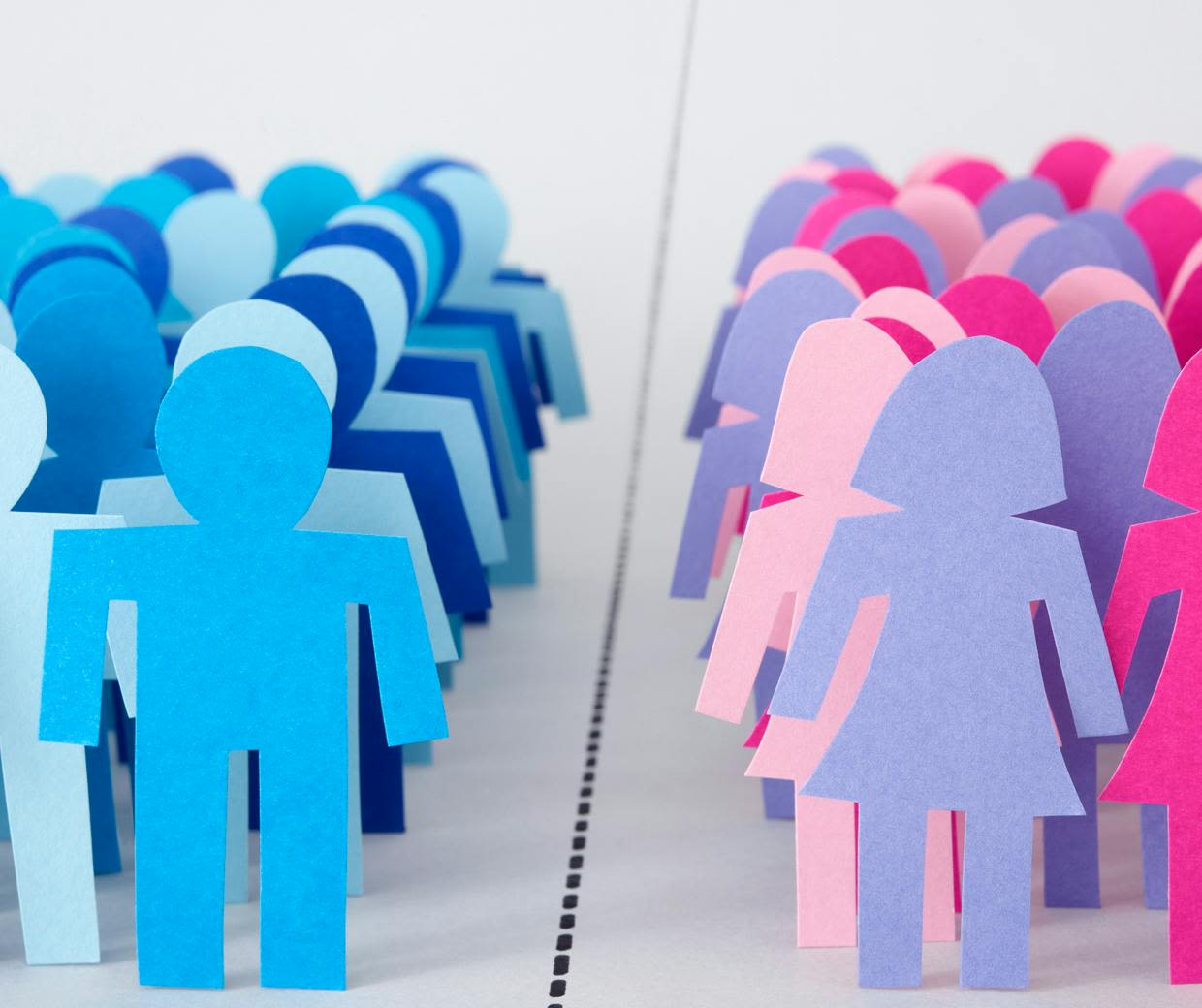

A gender-equal society would be one where the word 'gender' does not exist: where everyone
can be themselves.
- Gloria Steinem
(Thakuri, 2020)
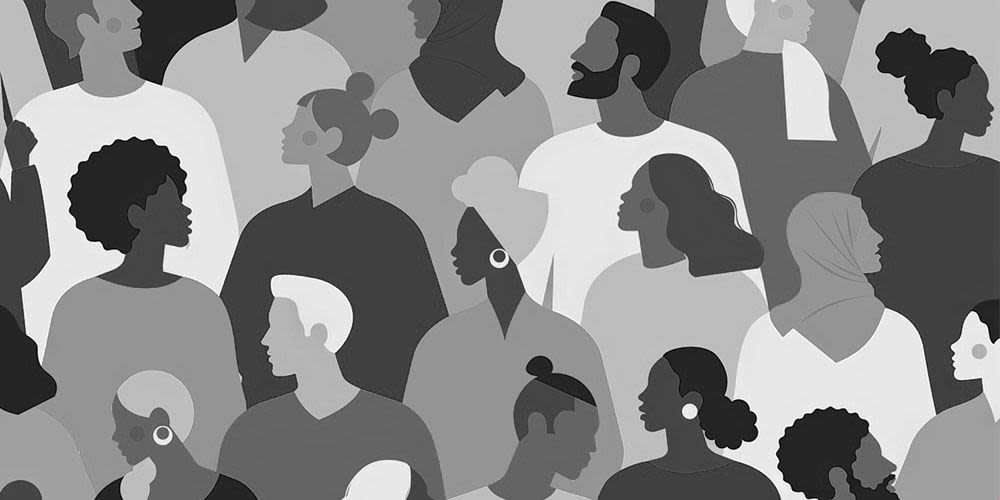
Gender Roles and Stereotypes - What are they, and how do they work together?
Gender roles and stereotypes encompass societal expectations and norms dictating the behaviours, attitudes, and activities deemed appropriate for individuals based on their perceived or assigned gender. These expectations are often shaped by preconceived notions about the inclinations and preferences associated with each gender.
However, it's crucial to recognise that these perceptions may not accurately reflect the diversity and complexity of individuals' experiences and identities.
Despite this, gender roles and stereotypes continue to influence how people are expected to behave, dress, and interact within their communities, often reinforcing traditional notions of masculinity and femininity while disregarding the full spectrum of human expression and identity.
When we look back to the origins of gender roles, we can analyse that pre-industrial cultures were largely shaped by agricultural techniques, especially the introduction of the plough. Because ploughing agriculture requires physical labour, civilisations that adopted the plough tended to create more rigid gender roles, with women performing household chores and males primarily involved in plough agriculture.
This result indicates a causal relationship between gender-based work division and technology, specifically the plough. The plough made it easier to grow crops that needed a lot of physical strength, which made men the primary workers in agriculture. As a result, women's roles shifted to emphasise domestic duties like childrearing, cooking, and sewing.
This will allow us to explore the ideas of the most popular gender norms and stereotypes and how they have changed (or not) throughout time.


'Pink is for girls, Blue is for Boys'
Gender stereotypes pervade society, influencing various aspects of behaviour and perception. They dictate colour preferences, with "pink for girls, blue for boys" a common trope. Occupationally, nursing is typically associated with women, while engineering is seen as a male domain. Emotional expression is stereotyped, with women expected to be more sensitive and men encouraged to remain stoic. Parenting roles follow suit, with women assumed to be natural caregivers, while men may be perceived as less competent in childcare. Appearance expectations, leadership abilities, household chores, risk-taking behaviour, and intelligence are all areas where gender stereotypes exert influence, shaping perceptions and behaviours in subtle yet pervasive ways. These stereotypes often reinforce traditional gender roles and can limit individual expression and opportunities for both men and women.
(Alpert, 2020)
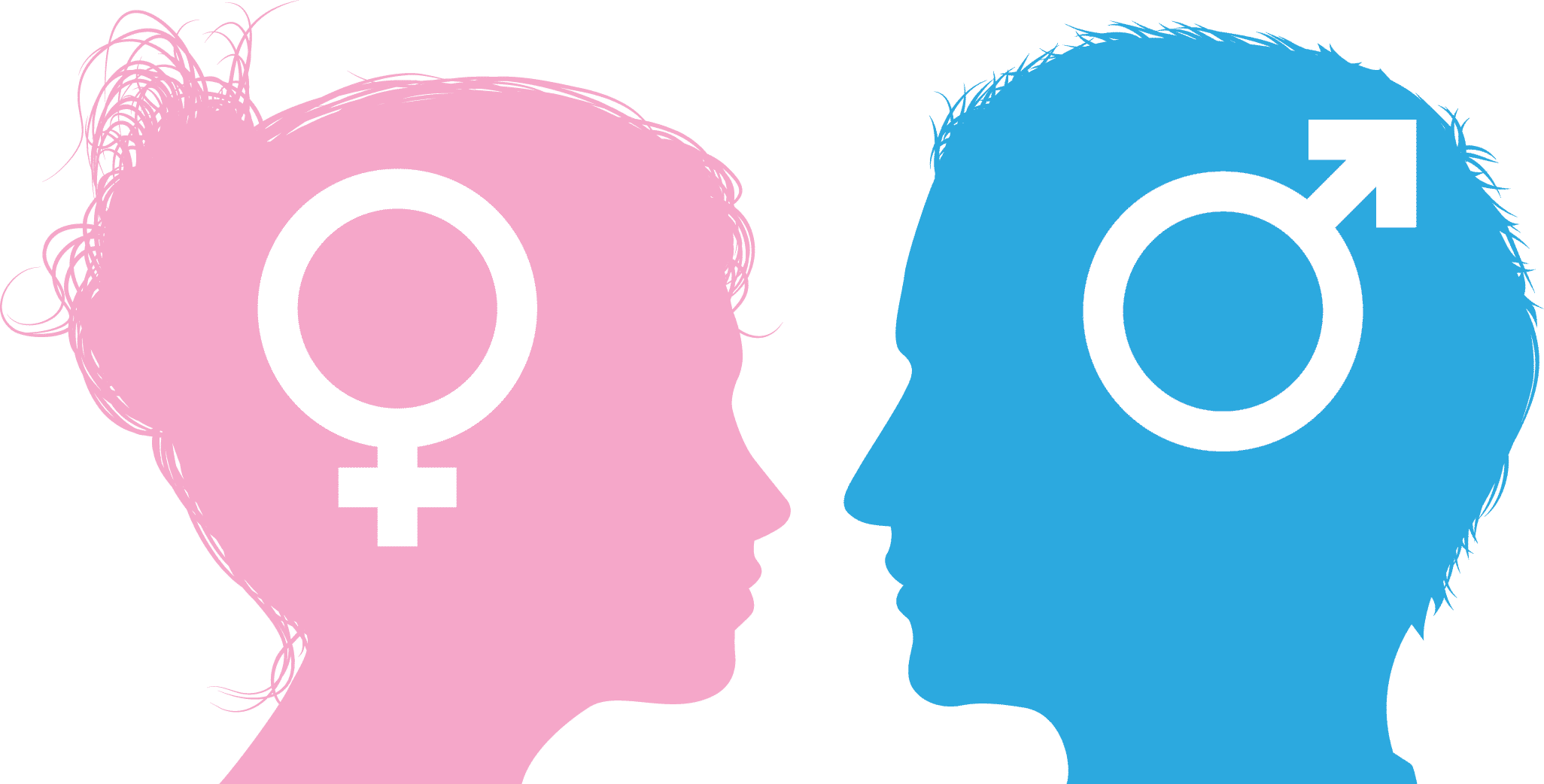
Common Gender Stereotypes...
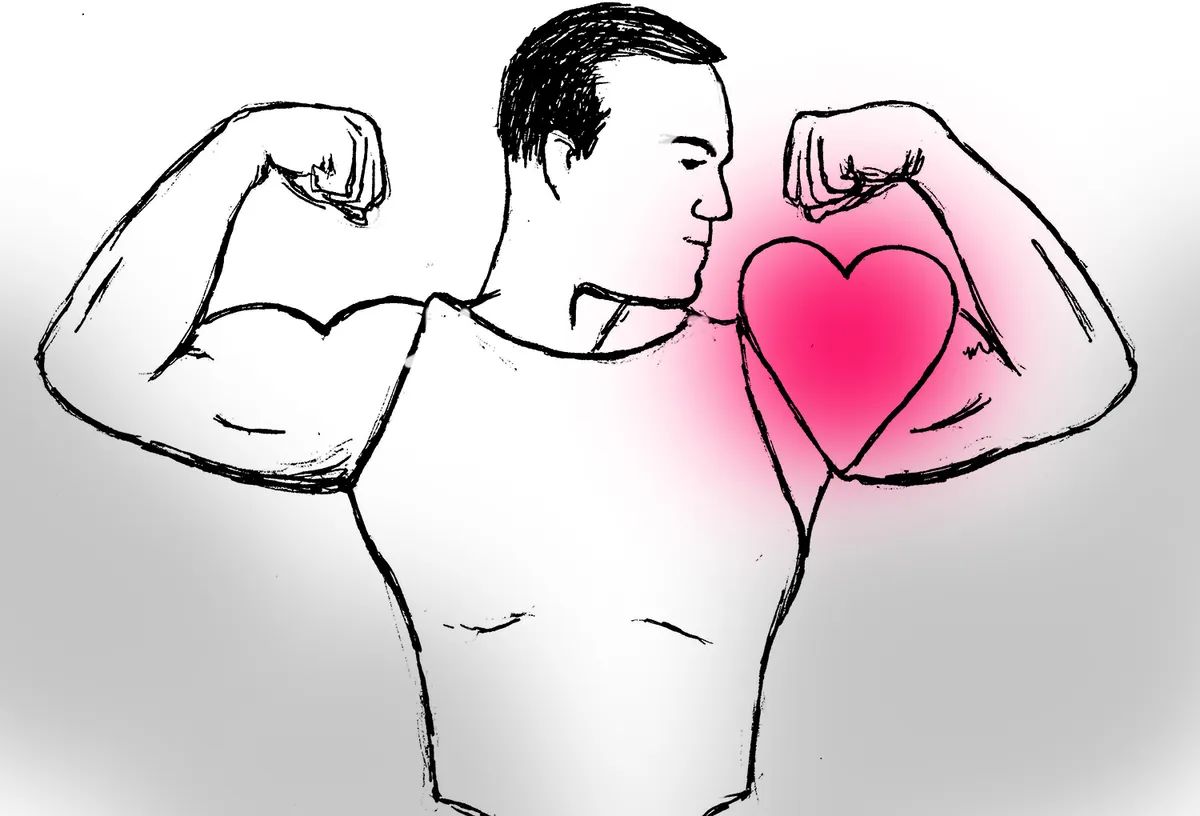
Male
Strong and aggressive: When competition or leadership are required, men are typically expected to possess physical strength, assertiveness, and dominance.
Emotionally reserved: There's a stereotype that men should suppress emotions like sadness or vulnerability, instead displaying toughness or stoicism.
Breadwinner: Males are frequently expected to be the primary breadwinners in their families (Blackstone, 2003), with a focus on financial security and professional achievement.
Insensitive to pain or weakness: There's a stereotype that men shouldn't express weakness or vulnerability and should bear suffering without complaining.
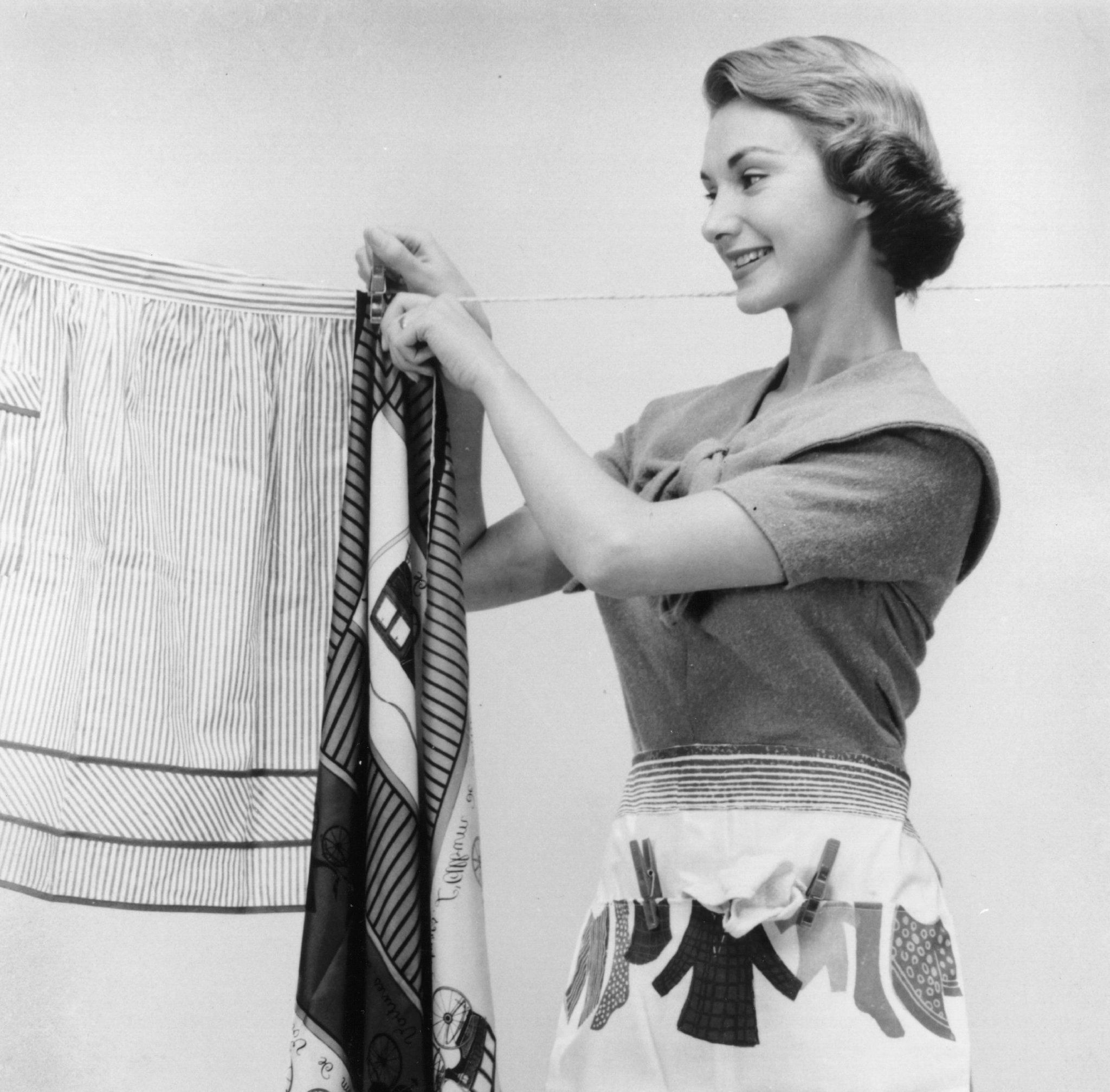
Female
Nurturing and caregiving: Women are expected to take up caregiving responsibilities for children, the elderly, or sick family members since they are perceived as inherently caring, sympathetic, and compassionate.
Emotionally expressive: There is a misconception that suggests women may be more prone to emotional outbursts or mood swings (Blackstone, 2003) and that they should be more emotionally expressive and in touch with their feelings.
Domestic responsibilities: Whatever their profession or level of education, women are generally expected to handle family matters, cook, clean, and perform other household activities.
Appearance-orientated: Women face greater pressure to conform to social norms of femininity and beauty and are frequently subjected to harsher physical criticism.

Gender Roles and Religion
Unsurprisingly, gender traditions have roots in religion and religious texts. Namely speaking, Christianity and the Bible. The book of genesis (the first book of the Bible) purports to set men above woman and establish male superiority (a patriarchy, if you will):
"And Adam said, This is now bone of my bones, and flesh of my flesh: she shall be called Woman, because she was taken out of Man." (Genesis 2:23, 1611)
While there are interpretations of this verse that seek to avoid labels of male domination, "This story constitutes a paradigmatic expression of the 'otherness' of women." (de Beauvoir, 1952). Continuing on, Eve is seemingly punished more harshly than the man (Adam) and adds a dependence to men: "thy desire shall be to thy husband, and he shall rule over thee." (Genesis 3:16). This contrived subservience to the man is a tenet for religious and (later) societal gender roles where men are expected to be the leader in a relationship. Seemingly, this means placid submission is the assigned lot for women.
While this thinking may appear archaic, some sects of Christianity, as a religion and culture, have, "retained rules that disadvantage women, mandating obedience of a wife to her husband, denying eligibility for religious office, and prohibiting contraception..." (Raday, 2003), to this day. We see the effects of this reflected, not only in religion, but in secular society as well.

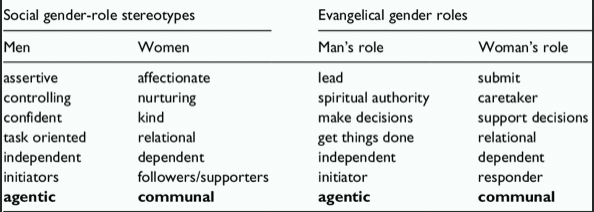

How do religious traditions intersect with modern society?
Religious Gender Roles
'Obedience': Men are expected to be leader of the household (Blackstone, 2003), they have last call on matters of importance, and they are expected to take responsibility for mistakes. Conversely, Women are expected to act in a supporting role for their husbands; this hearkens back to the 'otherness' of women. Religion presupposes men and women are fundamentally different and, therefore, must undertake specific roles.
Positions of authority: Looking at what Paul says to the Corinthians (Corinthians 14:34), there is a clear gatekeeping element for authority. Put plainly, this scripture extrapolates that women should not preach to men (barring necessity), and they should not ever be in charge of men. There is no such compunction for males.
Contraception: There is a notion that using contraceptives or protection is wrong (this includes pills), but this is an extremely conservative stance because there is biblical support for contraception. A non-issue here, but modern society still has gendered expectations for protection.
Modern Gender Roles
'Obedience': Men are often the ones pursuing women and taking initiative in the heterosexual dating scene.
Toxic male sub-cultures arise where some men aspire to be an 'alpha male'--showing any weakness or letting a woman be in charge is considered 'beta' behaviour'.
Positions of authority: Professional workplaces provide a challenge women because it becomes increasingly difficult for women to land corporate positions of authority the higher up the company ladder they go. This is known as 'the glass ceiling effect' (Cotter, 2001). Along with this comes the challenge of respect in the workplace because, oftentimes, men do not want to be subordinate to a woman. If men grow up with and are used to the idea of being leaders, there is a desire to not subvert the norm.
In modern workplaces, men are often in positions that call the big shots, and women tend to be in more co-operative roles.
Contraception: There are modern attitudes towards who is responsible arranging protection for intimacy--it often falls to the girl to 'be on the pill', or to go a step further, like getting an IUD. This could be chalked up to boys thinking condoms are 'uncomfortable' or that they ruin the 'spontaneity of the moment' (Brown, 2014).
Marriage is the oldest and longest example in society where gender roles and stereotypes are present. Traditional gender roles often dictate that men are responsible for earning the income and handling finances and are seen as the ‘Breadwinners’, while women are expected to manage household duties and childcare (Blackstone, 2003). The husband is expected to hold a more authoritative role in marriage while the wife is presumed to present more as a nurturing figure.
The biggest tradition in marriage is also tied to gender roles. When a woman gets married, she has the choice to keep her maiden name or take her husbands. This practice is rooted back to English common law under a legal doctrine that stated a woman's legal identity was merged to her husband's once married (O’Connell-Domenech, A. 2023).
This traditional practice still carried out today sparks controversy on what this means for women.
Though legally permitted to keep their surnames after marriage in the US, 87% of women in heterosexual partnerships take on their husbands' names. (Kelley, 2023)
When women choose to take their husband's name and give up their identity, a sense of ownership is placed on the woman. While this feels wrong in our generation, the tradition is still normalised and embedded into our society.
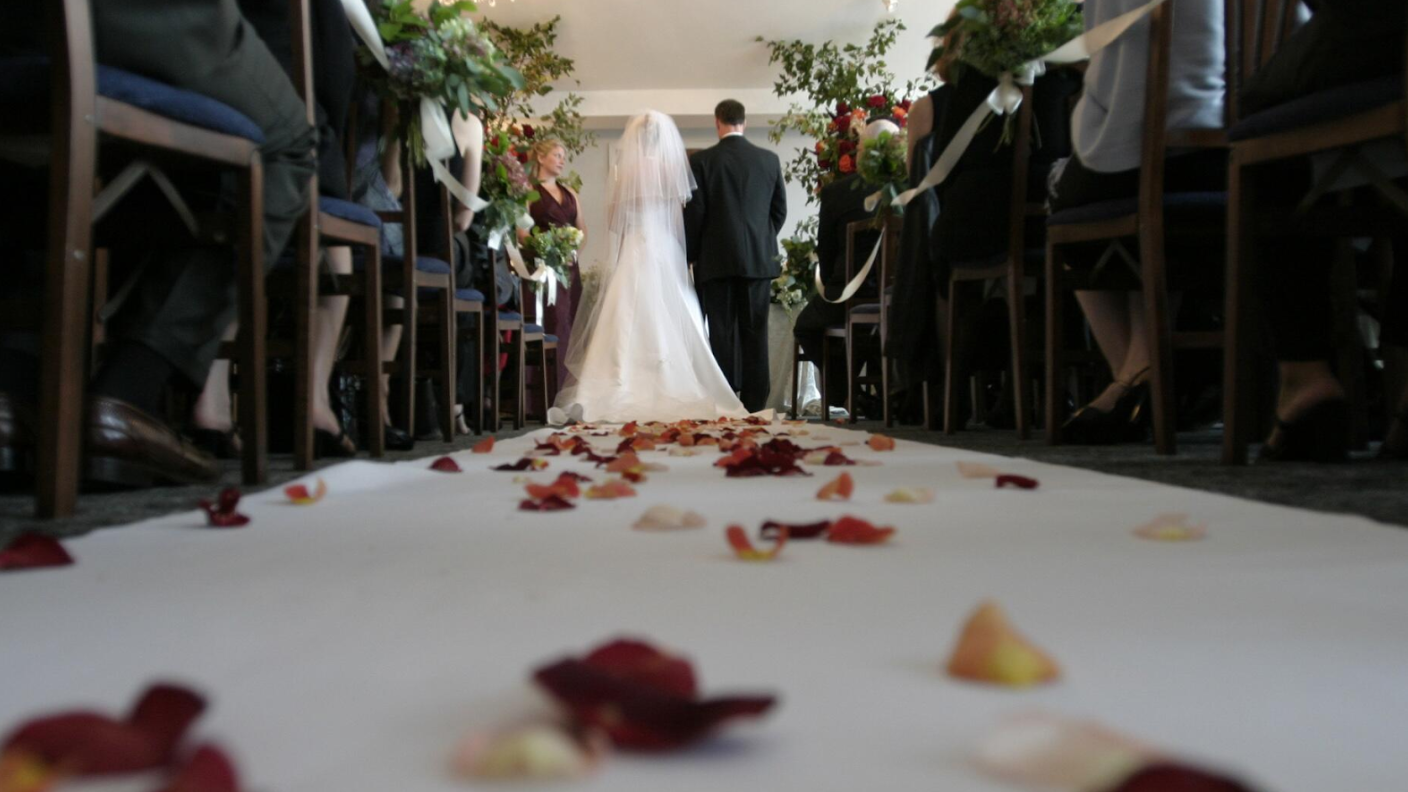
Growing up in a Gendered World.
Children and gender stereotypes often intersect in complex ways, influencing their perceptions of themselves and others from an early age. These stereotypes, ingrained in societal norms and media representations, can shape children's behaviors, interests, and aspirations, often limiting their potential and reinforcing traditional gender roles.
From infancy, children are surrounded by messages that dictate how boys and girls should look, behave, and interact. Toys, clothing, and media targeted at specific genders reinforce these stereotypes, depicting certain activities, colors, and traits as inherently masculine or feminine. For example, action figures and toy cars are marketed towards boys, while dolls and play kitchens are marketed towards girls.
As children grow, they internalize these messages, conforming to gendered expectations in their play, friendships, and activities. Boys may feel pressure to be strong, assertive, and unemotional, while girls may be encouraged to prioritize appearance, nurturing, and domesticity. These stereotypes not only limit children's self-expression but also perpetuate harmful notions of superiority and inferiority based on gender.
Moreover, gender stereotypes can have lasting effects on children's development and well-being. Boys who are discouraged from expressing vulnerability or emotion may struggle with mental health issues later in life, while girls who are steered away from STEM fields may miss out on fulfilling career opportunities. Additionally, children who do not conform to traditional gender norms, such as transgender or nonbinary individuals, may face discrimination and exclusion, further perpetuating harmful stereotypes.
However, it's important to recognize that children are not passive recipients of gender stereotypes. They actively interpret and negotiate these messages, challenging and redefining gender norms in their everyday lives. Parents, educators, and caregivers play a crucial role in fostering environments that promote gender equality and diversity, encouraging children to explore a wide range of interests and identities free from judgment or prejudice.
(Alpert, 2020)
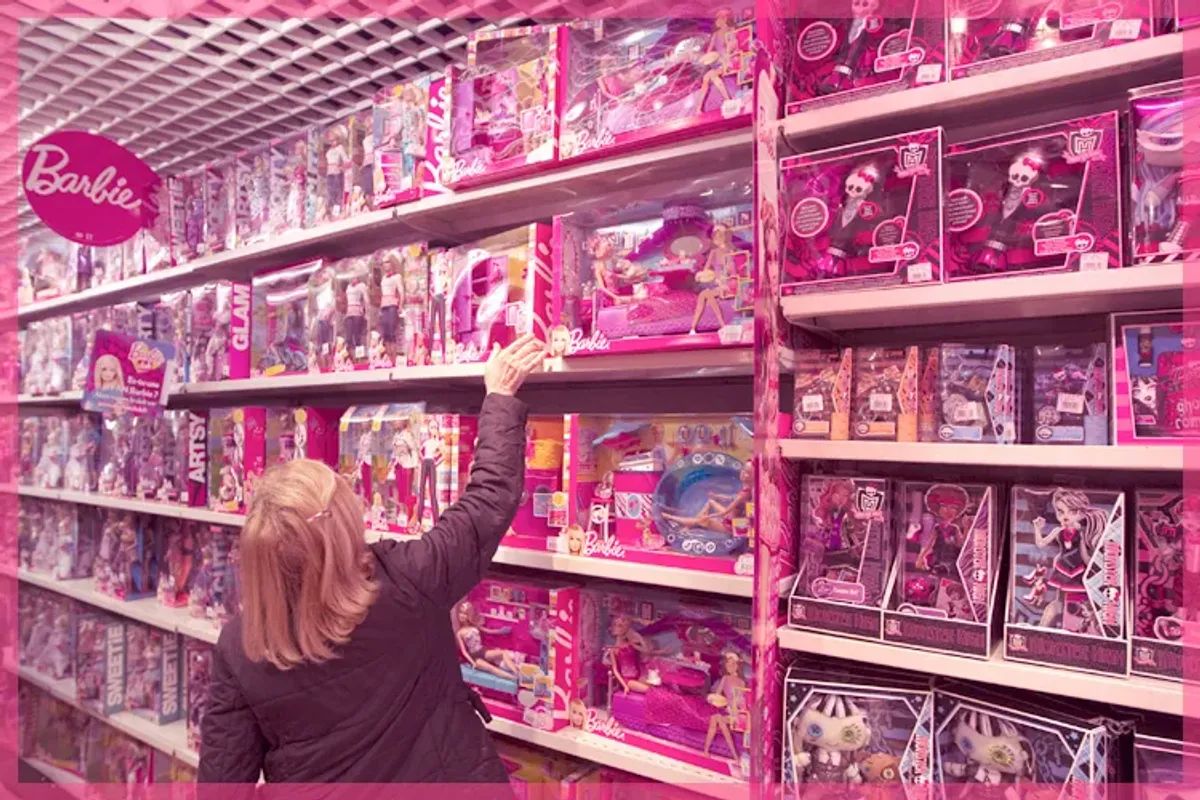

Nara Smith - A Modern Day Stereotype.
Nara Smith is a South African-German fashion model who has recently gained popularity on social media, particularly TikTok, with 6.3 million TikTok followers as of May 2024. She lives with her Husband, Lucky Blue Smith, and her two children.
Nara is often seen in her videos waking up with her husband or children stating they crave something, from things such as pizza to cereal. Nara then gets up and creates the dishes from scratch.
Nara Smith has been titled a 'tradwife ', a term that refers to a woman who embraces traditional gender roles or as Thatcher (2024) states, "In other words, a world where women turn away from the workforce, in favour of subservient housebound roles that generations before them fought to break.". Her online persona is a testament to this, with a focus on traditional cooking and homemaking. Although her portrayal of domestic life may not accurately reflect her actual reality, it resonates with an audience intrigued by the intersection of tradition with modernity.
While Nara's agency presenting this image of womanhood is debatable, her apparent fulfilment in embracing traditional roles sparks discussions among Gen Z viewers. The resurgence of interest in homemaking content, particularly among woman who are financially supported by their partners, is a reaction to the complexities of modern femininity and workplace dynamics.
Others such as 'Emily Mariko' or 'Hannah Neeleman' are examples of others who are following this same trope.
Comments on content from Nara Smith and others, such as "no thoughts, head empty," "lobotomy-core," and "I know she sleeps so well at night," only reinforce the trope of the 'tradwife'.
This content sparks controversy as it brings up questions, "are we going back in time?" and "Does this content go against feminism and the hard-fought progress of women?' These concerns prompt a reflective examination of societal norms and values.

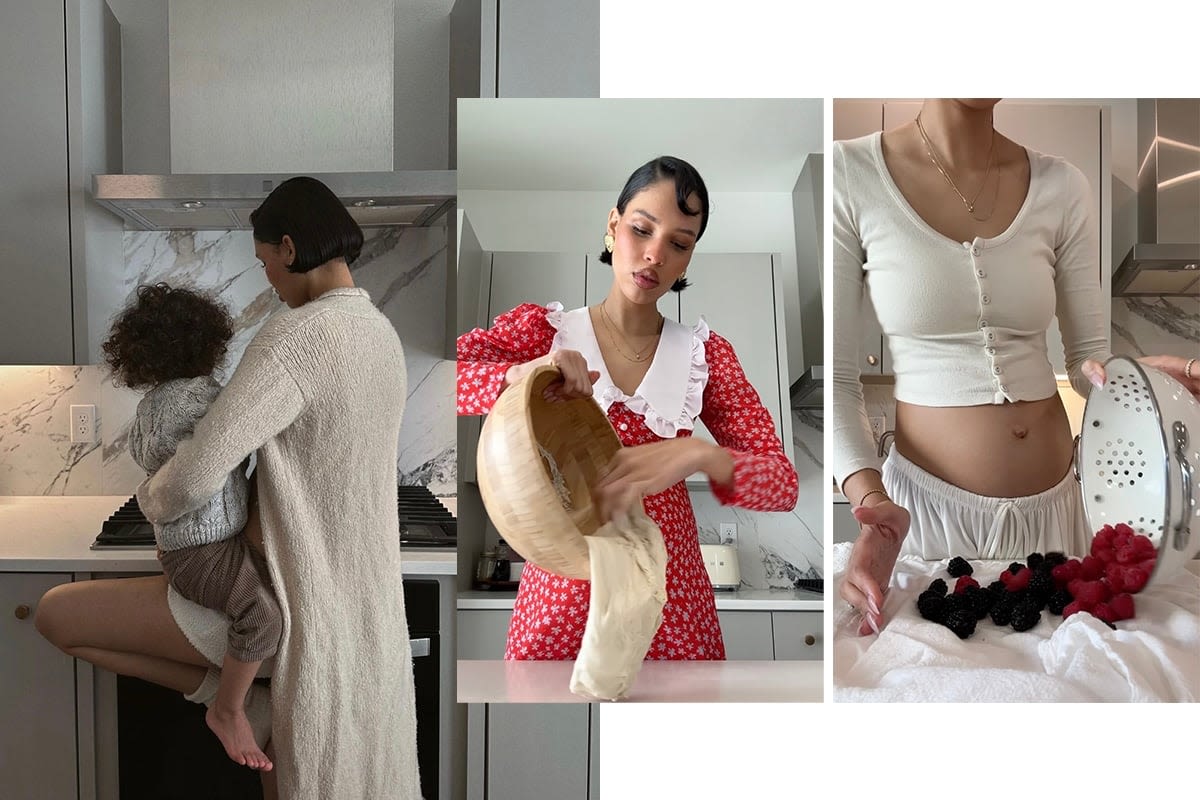
Conclusion
In Conclusion, the stereotypes we see in society are slowly changing. However, it's evident that even when the bible was written, the stereotypes were the same. Addressing gender stereotypes is not just about correcting historical misconceptions. It's about creating a better future. It requires collective efforts from individuals, communities, and institutions to promote awareness, education, and systemic change. Embracing diversity, fostering inclusivity, and advocating for equal opportunities are crucial steps toward dismantling harmful gender stereotypes and creating a more equitable society. By challenging assumptions, embracing complexity, and celebrating the richness of human diversity, we can move closer to a world where individuals are free to define themselves on their own terms, regardless of gender, and where everyone can thrive without the constraints of stereotypical expectations.
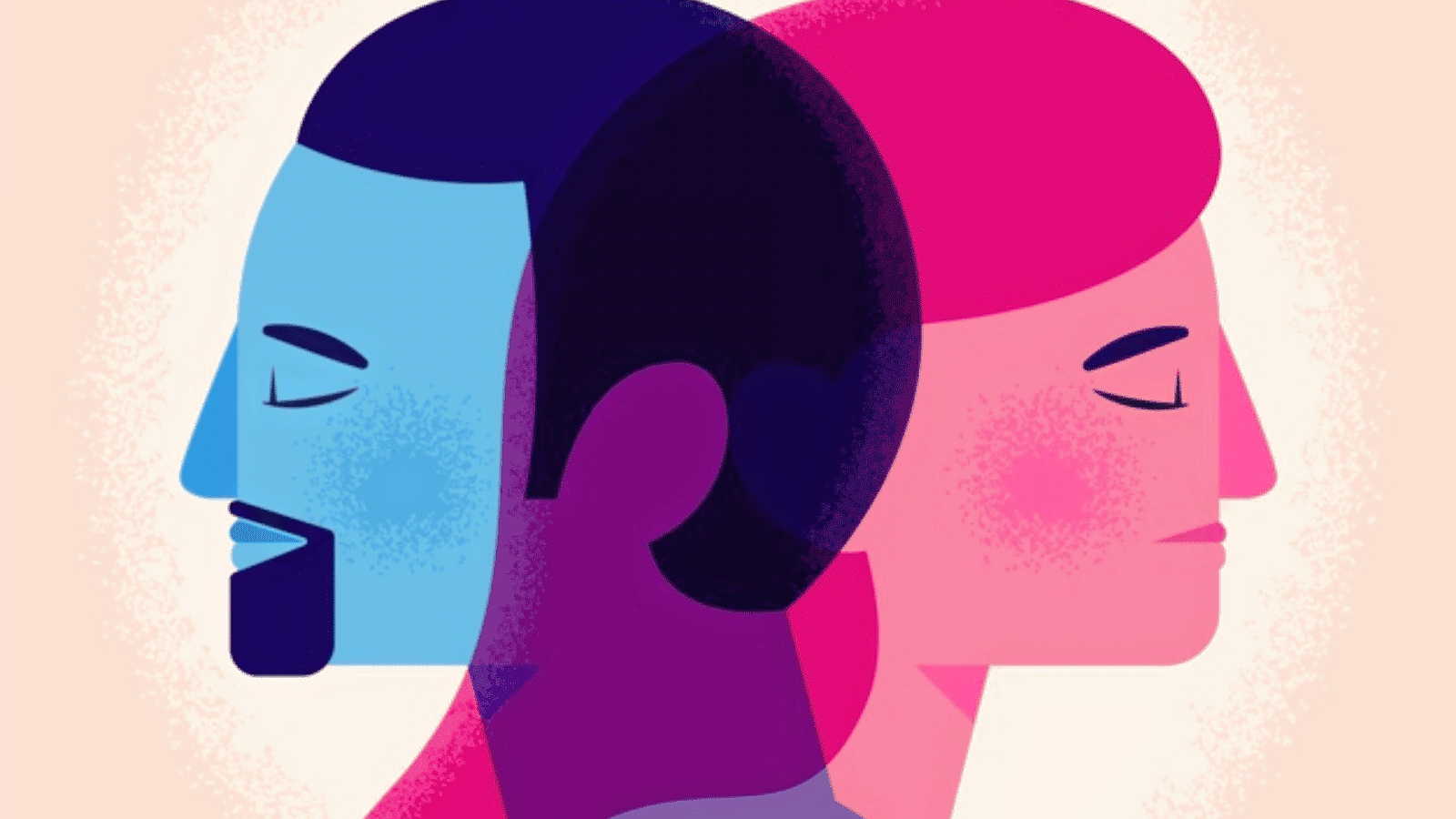
Bibliography
Journal Articles
Alberto Alesina “The Origins of Gender Roles: Women and the Plough” (2003) Quarterly Journal of Economics 469.
David Cotter and others “The Glass Ceiling Effect” (2001) 80 Social Forces 655.
Francis Raday “Culture, religion, and gender” (2003) 1 International Journal of Constitutional Law 663.
Sally Brown “‘They think it’s all up to the girls’: gender, risk, and responsibility for contraception” (2014) 17 Culture, Health & Sexuality 312.
Books and Book Chapters
Amy Blackstone “Gender Roles and Society” in Julia Miller (ed) Human Ecology: An Encyclopedia of Children, Families, Communities, and Environments (ABC-CLIO, Santa Barbara, 2003) 335.
King James Version The Bible (1611) Corinthians 14.
King James Version The Bible (1611) Genesis 2.
Simone de Beauvoir The Second Sex (1st ed, Alfred A Knopf, New York, 1952) at 718.
Internet Materials
Alejandra O’Connell-Domenech “Why most women still take their husband’s last name” (13 October 2024) The Hill <thehill.com>.
Kelley, K. (2023). The effect of marital name choices on heterosexual women’s and men’s perceived quality as romantic partners. Socius, 9, 237802312211481. https://doi.org/10.1177/23780231221148153.
Kirsty Thatcher “Is ‘Tradwife’ Content Anti-Feminist? An Expert Weighs In” (15 March 2024) ELLE <www.elle.com.au>.
Kitty Lloyd “The allure of the domestic goddess: Tradwives, Nara Smith and Gen Z” (16 March 2024) Ensemble Magazine <www.ensemblemagazine.co.nz>.
Sony Thakuri “A Whole New World”” (24 January 2024) Medium <medium.com>.
Yelena Moroz Alpert “10 Gender Stereotype Messages Parents Are Sending Kids” (6 August 2020) The BUMP <www.thebump.com>.
Images
2024, the Apostle Paul with some out-of-pocket things to say, Biblica Inc., <www.biblegateway.com>.
2024, men and women paper cutouts, Centaur Media plc, <www.marketingweek.com>.
2024, man and woman silhouettes talking, <fameleadersacademy.ph>.
2022, Wedding Aisle Photo, Michelle Graff, <nationaljeweler.com>
2020, Nara and Lucky Blue Smith wedding photo, Instagram, <people.com>.
2016, comparing societal and religious gender roles, <www.semanticscholar.org>.
2014, condom, Medibank, <www.medibank.com.au>.
